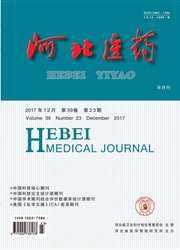

 中文摘要:
中文摘要:
目的探讨记录脊髓Ⅱ板层神经元兴奋性和抑制性突触后电流的方法。方法SD雄性大鼠,160~180 g,2%氟烷和100%氧气吸入麻醉后快速取腰段脊髓,迅速放入冰冷充氧的人工脑脊液,将约1 cm长的脊髓粘立于振动切片机载物台上,同时覆以冰冷的人工脑脊液进行横切片,片厚350~450μm,Kreb’S液提前30 min用95%CO2和5%O2预充氧,将切好的脊髓薄片转移其中,34~35℃孵育至少1 h后,以备实验记录用。结果在倒置显微镜下可清楚分辨出脊髓Ⅱ板层神经元。采用全细胞电压钳记录技术,给予选择性受体阻断剂以分离不同的突触后受体电流。在钳制电压为-70 mV时,可以记录到谷氨酸能的兴奋性突触后电流(EPSCs);而在钳制电压为0 mV时,可以记录到抑制性突触后电流(IPSCs)。结论该方法为研究脊髓Ⅱ板层神经元递质释放提供了有效的途径。
 英文摘要:
英文摘要:
Objective To investigate the method that records the excitatory postsynaptic currents (EPSCs) and inhibitory postsynaptie currents (IPSCs) in lamina Ⅱ neurons of spianl cord. Methods Male SD rats weighted 160 - 180 g were used. The rats were anesthetized with 2% halothane and 100% O2, the lumbar segment of the spinal cord was rapidly removed through a limited laminectomy. The segment of the lumbar spinal cord was immediately placed in ice-cold sucrose artificial cerebrospinal fluid (aCSF) pre-saturated with 95% O2 and 5% CO2. The 1 cm block was then placed in a shallow groove formed in a gelatin block and glued on the stage of a vibratome. Transverse spinal cord slices (350 - 450μm) were cut in the ice-cold sucrose aCSF and then pre-incubated in Kreb' s solution continuously gassed with 95% O2 and 5% CO2 at 34- 35℃ for at least 1 hour before they were transferred to the recording chamber.Results The lamina Ⅱ had a distinct translucent appearance and could easily be distinguished under the microscope. The recordings of postsynaptic currents were performed by using the whole-cell voltage-clamp method. Specific receptor antagonist was used to separate the different postsynaptic currents. The currents of excitatory postsynaptic currents (EPSCs) were recorded at the holding potential of - 70 mV, while the currents of inhibitory postsynaptic currents (IPSCs) were recorded at the holding potential of 0 mV. Conclusion The methods provide the effective approach for studying the neurotransmiuer release in spinal lamina Ⅱ neurons.
 同期刊论文项目
同期刊论文项目
 同项目期刊论文
同项目期刊论文
 期刊信息
期刊信息
